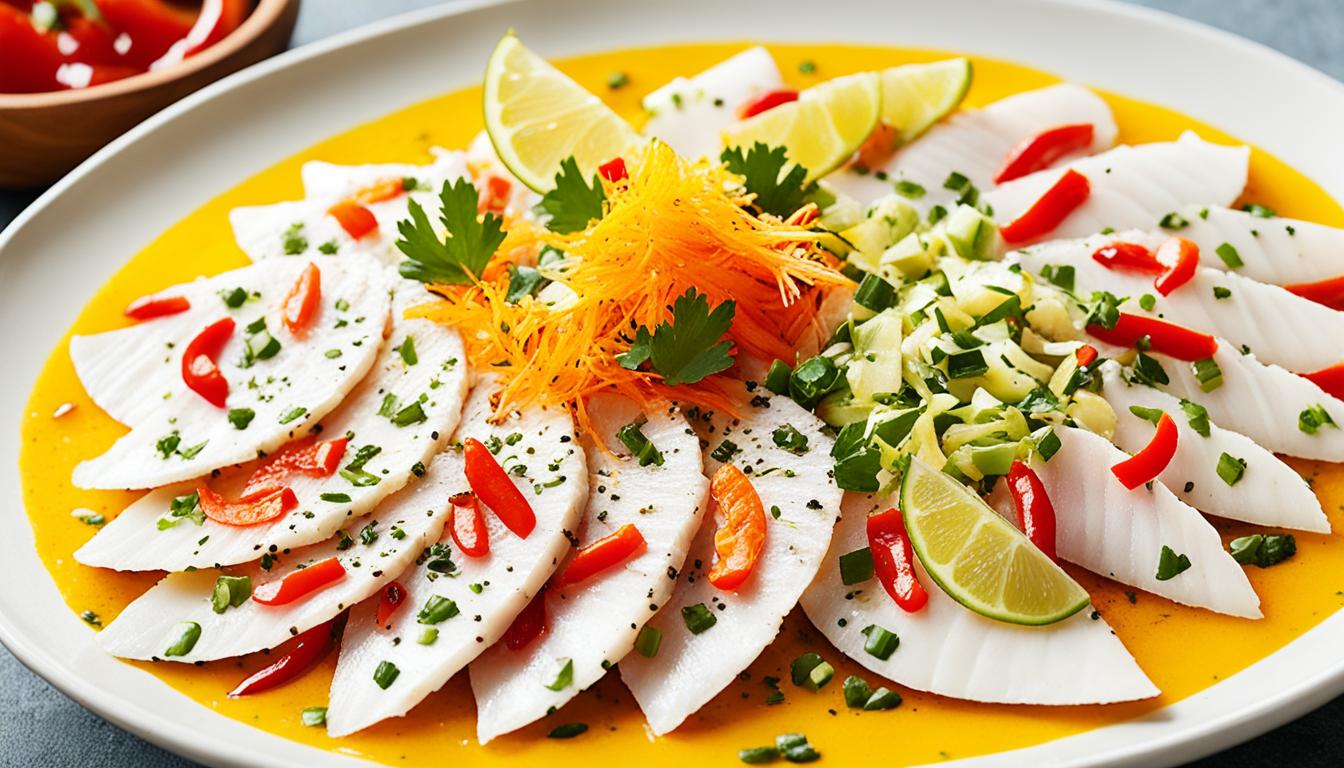Think you know all about Peruvian cuisine? Feast your eyes and taste buds on the vibrant and mouthwatering world of Peruvian tiradito. This traditional Peruvian dish is a showstopper that combines the best of ceviche and sashimi, marrying flavors and techniques that will leave you craving for more. But what sets Peruvian tiradito apart? What secret ingredients create its unique taste that has captivated food enthusiasts around the globe?
Prepare to be whisked away on a culinary adventure as we unveil the tantalizing secrets behind Peruvian tiradito. From the distinctive flavors of aji amarillo and lime to the art of marinating fish, we’ll explore the rich history and techniques that make this dish a cornerstone of Peruvian cuisine. Get ready to tantalize your taste buds and discover the allure of Peruvian tiradito.
The Making of Aji Amarillo Paste
Aji amarillo paste is a crucial ingredient in Peruvian tiradito. It adds a distinctive flavor and heat to the dish. There are two main ways to obtain aji amarillo paste.
- The first option is to buy a jar of pre-made aji amarillo paste from a market that sells authentic Peruvian ingredients. This is a convenient choice for those who want to save time in the kitchen and have easy access to this flavorful ingredient.
- However, for a more flavorful and authentic result, we recommend making the paste from scratch using frozen whole ají amarillo peppers. This allows you to capture the natural floral and fruity notes of the pepper in your homemade paste.
To make your own aji amarillo paste, follow these simple steps:
- Start by boiling the ají amarillo peppers for 10 minutes. This softens the peppers and makes them easier to work with.
- After boiling, remove the stems and seeds from the peppers. This will help reduce the spice level and ensure a smoother consistency for the paste.
- Transfer the pepper flesh to a blender or food processor. Add a small amount of water to help with blending.
- Blend until you achieve a smooth paste-like consistency. If needed, you can add more water gradually to reach the desired texture.
Once your homemade aji amarillo paste is ready, you can store it in an airtight container in the refrigerator for future use. This paste can be used in various Peruvian dishes, adding a spicy kick and vibrant flavor to your culinary creations.
With your homemade aji amarillo paste in hand, you’re ready to elevate your Peruvian dishes to new heights of flavor. Enjoy the authentic taste of Peru with this essential ingredient!
The Preparation and Presentation of Tiradito
To create a delicious tiradito, the first step is to carefully slice the fish into large, sashimi-style pieces. The fish should be of the highest quality and freshness, ideally sashimi-grade varieties like salmon, yellowtail, fluke, or corvina. These delicate slices will showcase the vibrant flavors of the dish.
Next comes the crucial step of marinating the fish in the citrus-chile marinade, known as leche de tigre. This zesty blend of citrus juices and spicy chiles adds a burst of flavor and heat to the fish, elevating the overall taste of the dish. The marination process is essential as it imparts the fish with a slightly “cooked” texture, similar to ceviche.
When it comes to serving tiradito, there are traditional accompaniments that add even more depth to the dish. Peruvian corn, known as choclo, is often included as it provides a delightful crunch and a touch of sweetness. Thick rounds of cooked sweet potato are another traditional addition, offering a creamy and earthy contrast to the tangy marinade and delicate fish.
Variations and Personalization
While tiradito has its traditional accompaniments, the dish is highly versatile and open to interpretation. You can customize it according to your taste preferences and available ingredients. Feel free to experiment with different types of fish and even incorporate other seafood options, such as shrimp or scallops.
Additionally, you can play around with the marinating process and adjust the level of spiciness according to your liking. Some variations include adding extra heat with Peruvian rocoto peppers or infusing other citrus flavors like grapefruit or orange.
Remember, the beauty of tiradito lies in its vibrant flavors and textures, so it’s best served fresh and enjoyed immediately. Whether you’re hosting a dinner party or treating yourself to a culinary adventure, tiradito is sure to impress with its exceptional taste and beautiful presentation.
Peruvian Tiradito: A Fusion of Cultures
Peruvian tiradito exemplifies the remarkable culinary fusion that takes place in Peru. This delightful dish showcases the influences of Nikkei cooking, a blend of Japanese and Peruvian flavors that has left an indelible mark on Peruvian cuisine.
In the 19th century, the arrival of Japanese migrants in Peru sparked an extraordinary culinary exchange between the two cultures. This cross-pollination gave rise to the harmonious blend of Peruvian and Japanese culinary traditions, resulting in unique and mouthwatering dishes like tiradito.
Tiradito cleverly combines elements from both ceviche and sashimi, resulting in a dish that embodies the soul of Japanese-Peruvian food. The silky texture of thinly sliced fish, marinated in a zesty citrus-chile sauce, celebrates the elegant simplicity of sashimi, while the vibrant flavors and bold spices pay tribute to the Peruvian love for ceviche.
Peruvian tiradito is a testament to the flexibility and openness of Peruvian gastronomy. It resoundingly proves that when two culinary worlds collide, something extraordinary emerges. The marriage of Peruvian-Japanese influences in this dish exemplifies the vibrant tapestry of flavors that continue to captivate gastronomes worldwide.
